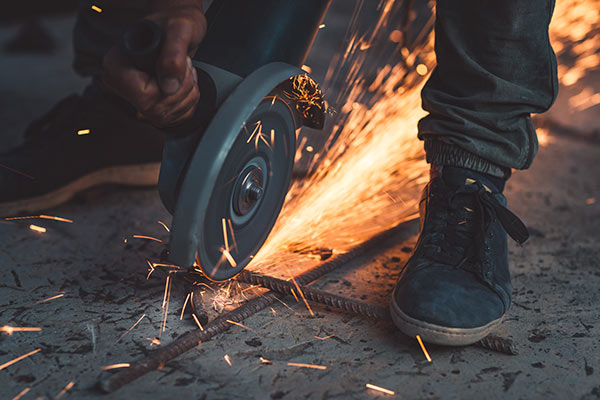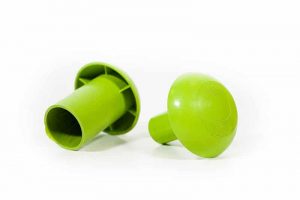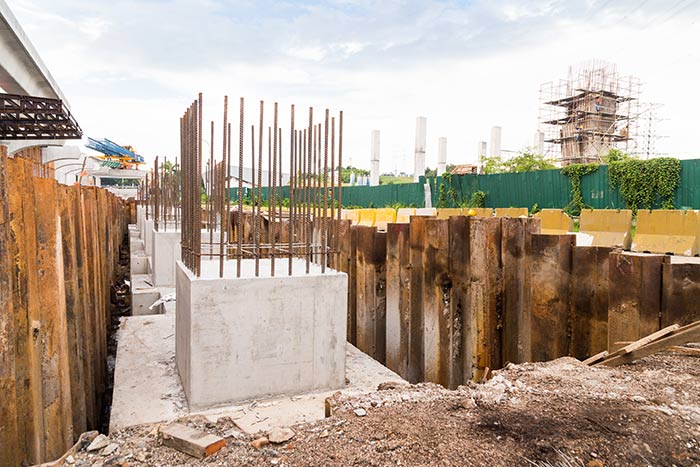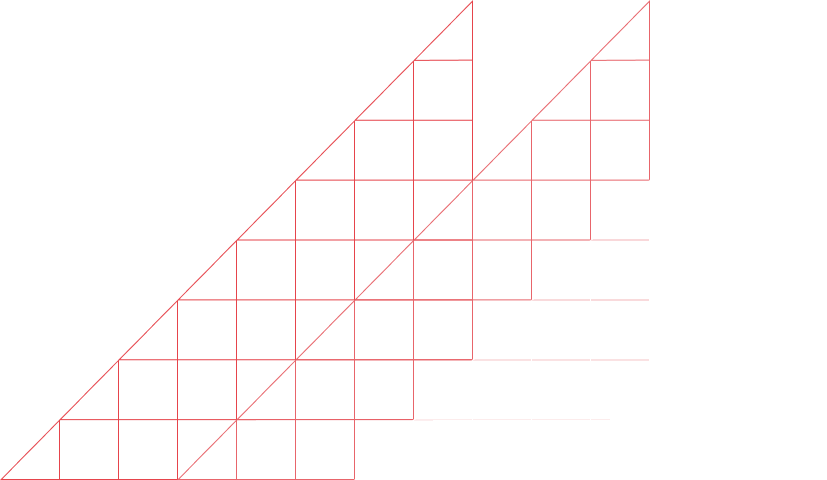Steel is routinely used in construction to reinforce concrete and to provide lateral strength in buildings of all types and sizes. There is a wide range of steel reinforcement products available nowadays, to provide simple, cost-effective solutions for every phase of a building project, from the smallest domestic driveway or extension to large-scale infrastructure projects and commercial builds. When it comes to concrete reinforcement, steel is the best material for the job, as it has a very similar thermal expansion coefficient to concrete, reacting to changes in temperature in a very similar way. Taking the time to understand the different steel reinforcement products is essential, if buildings and structures are to be structurally sound and delivered on time and on budget.
One key product in the steel reinforcement marketplace which is often less well understood is starter bars.
In this article, we take a look at just what starter bars are, how they are used, and the different types of starter bar that are available. With this knowledge, project teams will be better able to make the right purchasing decisions and to ensure that the steel reinforcement in their builds is used correctly and safely, to guarantee structural integrity over the full lifespan of the building or structure.

The Basics Of Starter Bars
When any kind of building or structure is constructed, there inevitably comes a time when two elements need to be joined together securely. This might be walls being tied to footings for example, or a retaining wall being tied to a slab base. There are many more scenarios where two elements need to be tied together, whether they are two concrete elements or a masonry wall being tied to a concrete slab, for example. In order to provide that reinforcement ‘tie’ between two elements, starter bars are typically used.
These are long bars of reinforcement steel, or rebar, which are embedded into one of the elements to be joined, with one end of each bar left sticking out, to allow the second element to be poured or built around those protruding bars.
Starter bars are often seen sticking out of footings, waiting for the walls of a building to be built up around them. Whilst that might be the most commonly seen example of starter bar usage, they are also used on a horizontal plane to connect elements together. Construction guidelines are, of course, available which stipulate the intervals between starter bars and the grade of steel required for different projects.
Starter bars embedded into flat slabs to join a vertical element to a base are relatively easy to handle, but where bars need to protrude horizontally, there is a little more work to be done, because formers needed to contain the poured concrete will need to have holes in them to accommodate the starter bars, and these will have to line up perfectly with the position of the starter bars. That also makes removal of the formers more complicated once the concrete is set.
More Complex Starter Bar Solutions
The simplest types of starter bar are either straight or L shaped, and these are the most commonly used. However, to accommodate more challenging situations, there are a number of other starter bar solutions available.
Screwed bars offer many advantages over traditional starter bars. These bars come in two parts, with a male and a female screw coupler on one end of each part. First, the bar with the female end is embedded in the first element, with the female screw coupler protruding. Once in position and with the concrete fully set, the second part of the bar, which has the male end coupler, is firmly screwed onto the embedded bar to give the required length of protruding starter bar. This is done with a special wrench, to ensure that the bar is screwed in correctly and to the correct tightness to guarantee that the necessary structural strength is provided through the assembled bars.
Another starter bar system involves small metal formers that are placed into the first element during its construction. These provide a ‘click-in’ anchor point for the starter bar, and they can be useful in situations where it is more difficult to get the right layout of starter bars.
Where a new element needs to be joined to a pre-existing element, starter bars can be added to the pre-existing element by drilling holes at the required spacings and then securing the bars using specialist resins. These resins can be applied into the drilled holes using an applicator gun, or by inserting a glass vial of resin into the hole, which is broken when the starter bar is pushed into place.

Safety first
Site safety should be paramount for every construction firm, regardless of the size or complexity of the build. Starter bars can present a safety risk, since they often protrude upwards or out of the side of an element, potentially for some time, until the second element is poured or built up around the bars. Site personnel are at risk of tripping or injuring themselves on these bars, and it is also very easy to drive into the bars when operating on-site plant or machinery. For these reasons, it’s recommended to cover the ends of the starter bars with protective plastic caps. These are typically bright yellow, to make them easy to spot from a distance. Alternatively, hooked starter bars are available. These have one end of the bar looped over, so that a pointed end is no longer sticking out, thereby reducing the chance of injury. Obviously, hooked bars do not have the added advantage of improved visibility that protective caps offer.
When Are Starter Bars Needed?
Typically, whenever two elements in a construction have to be joined together, starter bars are required to ensure the lateral strength of the finished building or structure. Starter bars are routinely used to join concrete or masonry walls to footings, for example. They are also used inside columns, and to provide structural integrity to retaining walls, where the wall itself is joined to a concrete base.
In all cases, but more particularly in retaining walls, starter bars should be installed with great care, to ensure that the bars are protected properly from corrosion. This means that they should be grouted in correctly, and not left open to the elements for longer than is absolutely necessary. For retaining walls, where soil will be in direct contact with the wall once constructed, proper drainage should be put in place on the soil side of the wall, to ensure all water is channelled away quickly and effectively.
Summary
Starter bars are an essential part of almost every construction project, providing a simple means of joining together elements of the build in a structurally sound and long-lasting way. Get in touch with us today for more information on the starter bar systems that we offer, to work out which starter bar solution is the right fit for your next project.



